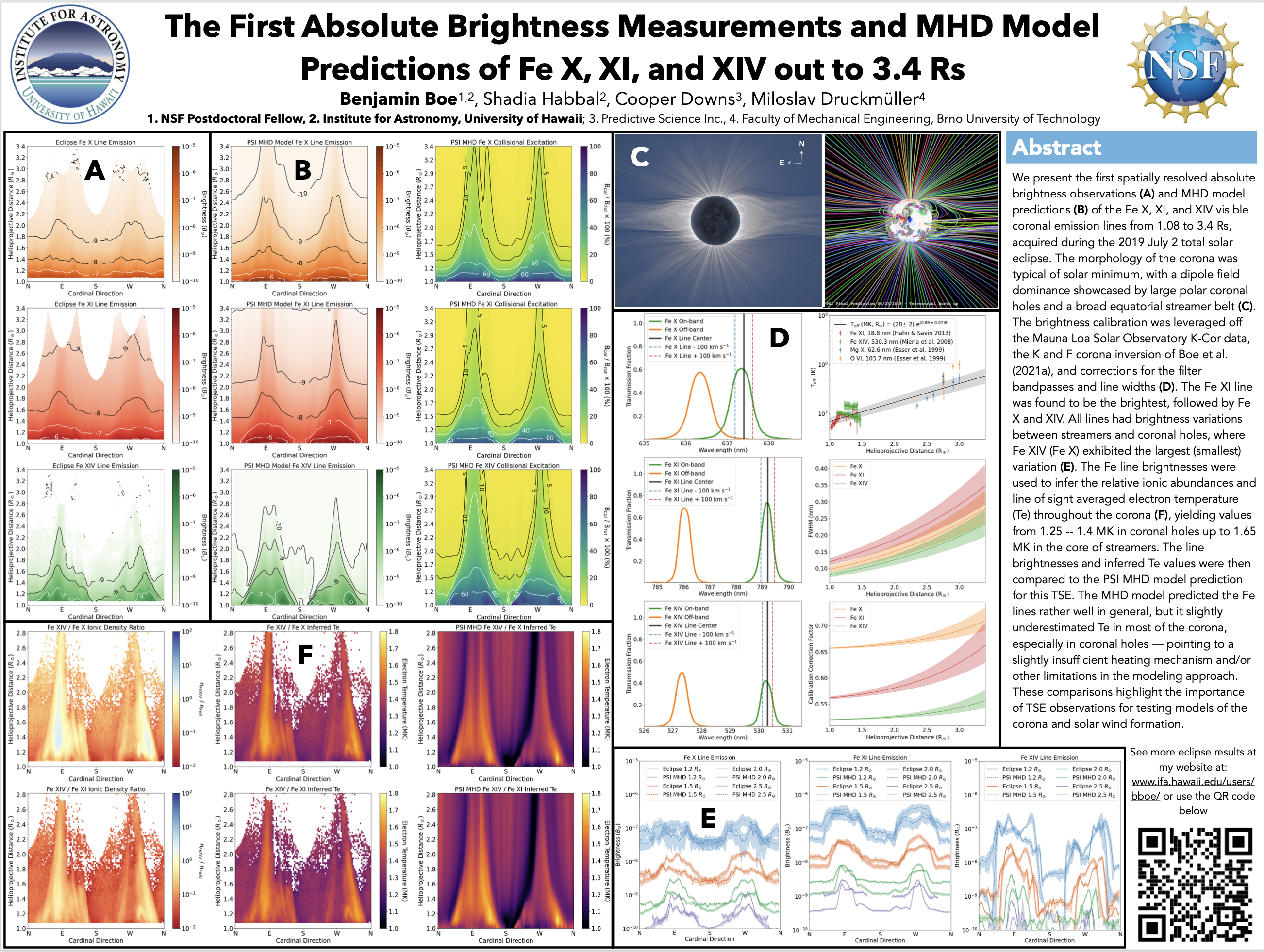Authors: Benjamin Boe (NSF Postdoctoral Fellow. Institute for Astronomy, University of Hawaii), Shadia Habbal (Institute for Astronomy, University of Hawaii), Cooper Downs (Predictive Science Inc.), Miloslav Druckmüller (Faculty of Mechanical Engineering, Brno University of Technology)
We present the first spatially resolved absolute brightness observations and MHD model predictions of the Fe X, XI, and XIV visible coronal emission lines from 1.08 to 3.4 Rs, acquired during the 2019 July 2 total solar eclipse. The morphology of the corona was typical of solar minimum, with a dipole field dominance showcased by large polar coronal holes and a broad equatorial streamer belt. The brightness calibration was leveraged off the Mauna Loa Solar Observatory K-Cor data, the K and F corona inversion of Boe et al. (2021a), and corrections for the filter bandpasses and line widths. The Fe XI line was found to be the brightest, followed by Fe X and XIV. All lines had brightness variations between streamers and coronal holes, where Fe XIV (Fe X) exhibited the largest (smallest) variation. The Fe line brightnesses were used to infer the relative ionic abundances and line of sight averaged electron temperature (Te) throughout the corona, yielding values from 1.25 — 1.4 MK in coronal holes up to 1.65 MK in the core of streamers. The line brightnesses and inferred Te values were then compared to the PSI MHD model prediction for this TSE. The MHD model predicted the Fe lines rather well in general, but it slightly underestimated Te in most of the corona, especially in coronal holes — pointing to a slightly insufficient heating mechanism and/or other limitations in the modeling approach. These comparisons highlight the importance of TSE observations for testing models of the corona and solar wind formation.


